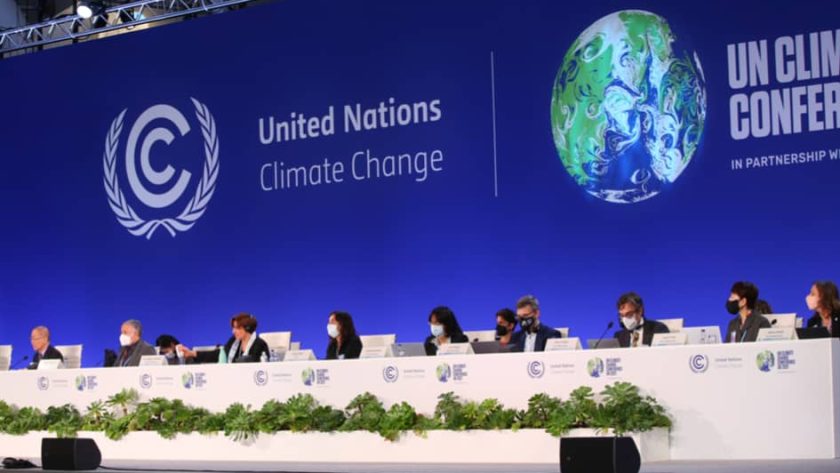Non-profit Global Fashion Agenda (GFA) has released the 2023 edition of its GFA Monitor at the beginning of the UN Climate Change Conference (COP 28) on Thursday.
GFA’s mission it is to accelerate impact to create a net positive fashion industry. The organisation will host a session on 5th December dedicated to the fashion sector at the event to highlight the industry’s involvement and responsibility, reflecting on progress towards a net zero and net positive future, presenting collective financing best practices and guiding policymakers.
“The second iteration of The GFA Monitor reaffirms the power of alliances to accelerate action. In a time of socioeconomic and geopolitical turmoil, executives need clear guidance more than ever to ensure sustainability measures can continue to move forward. By working collectively with multiple industry organisations, we were able to highlight the steps that are needed, collate a wealth of promising solutions and steer fashion stakeholders on their journey,” comments GFA CEO Federica Marchionni in a press release.
The GFA Monitor was introduced in 2022, with the second edition having been updated to include the latest guidance and insights from over 25 industry organisations. For the first time, the report also includes new data insights from the Fashion Industry Target Consultation (FITC), launched by GFA and the United Nations Environment Programme (UNEP) in November 2022, which draws from over 900 industry participants in 90 countries.
It gives an assessment of the current state (“Where are we today”) of five sustainability priorities — Respectful and Secure Work Environments, Better Wage Systems, Circular Systems, Resource Stewardship and Smart Materials Choices — and what should be done (“How to act today”). The report is grounded by the sustainability framework laid out in the Fashion CEO Agenda and includes insights from GFA’s impact partners, the Fair Labor Association, the Social & Labor Convergence Program (SLCP), the Ellen MacArthur Foundation, the Apparel Impact Institute and the Textile Exchange.
“The GFA Monitor is an extensive resource that presents expert insights on the status of the industry, clear actions to take and proven best practices. In a time of poly crisis when the implementation of sustainable practices is challenged, GFA is supporting the industry by consolidating an abundance of available solutions that can be applied today,” states GFA in the release.
Key findings
Overall, the data revealed that the majority of the 900 participants supports industry alignment on the 27 action areas proposed in the consultation and remarked that they are actively engaging with the industry to drive progress in the respective areas. The report further illustrates the level of industry ambitions per priority and the areas where more aligned action areas are needed.
Responsible purchasing practices
Though 88 percent of responding brands claimed to have set targets to adopt responsible purchasing practices, only 63 percent confirmed to be measuring progress against these targets. However, brands and producers unanimously expressed support for reaching alignment on this action area and engaging with the industry to collectively drive progress.
The least number of brands (58 percent) claimed to have set targets on worker access to effective grievance mechanisms while producers reported their lowest score on value chain transparency (75 percent).
“SLCP welcomes the urgent call for respectful and secure working environments in the 2023 GFA Monitor. By promoting greater transparency, use of converged tools, and responsible purchasing practices in the fashion industry, we can not only elevate the lives of millions but normalise an industry that thrives on respect, equity, and sustainable practices,” states Janet Mensink, executive director of the Social & Labor Convergence Program (SLCP).
Living wages
While most brands and producers (86 percent) claim to have set targets to implement fair compensation and living wages across the textile value chain, only one third of brands (33 percent) are setting targets on freedom of association or collective bargaining and closing the gender pay gap. In comparison, two thirds of producers/manufacturers (67 percent and 86 percent, respectively) have made these two important points their target.
“People who work in the global fashion industry deserve to have a safe workplace and to be treated with dignity and respect. FLA is proud to work with the Global Fashion Agenda and its partners on the GFA Monitor, which demonstrates that concrete opportunities exist for CEOs and corporations to improve the future for both people and planet,” adds Sharon Waxman, president and CEO of the Fair Labor Association.
Resources
The highest claims of target setting were related to decarbonisation and the reduction of greenhouse gas (GHG) emissions (88 percent of brands / 89 percent of producers/ manufacturers) and the elimination of hazardous chemicals (86 percent, 100 percent respectively).
The lowest number of respondents reported to be set towards eliminating microfibre pollution (36 percent of brands and 63 percent of producers/manufacturers) and in measuring and reporting progress (33 percent of brands and 63 percent of producers/ manufacturers).
Smart material choices
A significantly high number of respondents claimed to have set targets to produce and source priority materials from preferred and low climate impact sources (96 percent of brands and 100 percent of producers/manufacturers, while the former are setting most of their preferred material targets on cotton (92 percent) and the latter on polyester (90 percent).
Circular systems
According to the report, target setting in this field is “very fragmented” with many targets being self-defined, lacking comparability with peers and inconsistent ambition levels. However, FITC shows a surprisingly high percentage of brands and producers setting targets on complex topics like reducing absolute virgin resources (74 percent of brands and 89 percent of producers) and overproduction (78 percent of brands and 77 percent of producers).
Not surprisingly, the lowest target-setting results were related to eradicating messages encouraging unnecessary consumption (46 of brands and 53 percent of producers/ manufacturers), given that many fashion business models are based on overconsumption. Also low on the agenda of brands is measuring the actual impact on job quality and availability from circular business models to support a just transition to a circular economy, while almost three fourth of producers/manufacturers (73 percent) support this target.
“We envision a future where products are used more, are made to be made again, and are made from safe and recycled or renewable inputs. Global Fashion Agenda’s GFA Monitor supports the direction of travel to help organisations navigate the multifaceted transition to a circular economy for fashion, while emphasising the transparency that’s vital to turning this vision into reality,” concludes Jules Lennon, fashion lead at the Ellen MacArthur Foundation.



